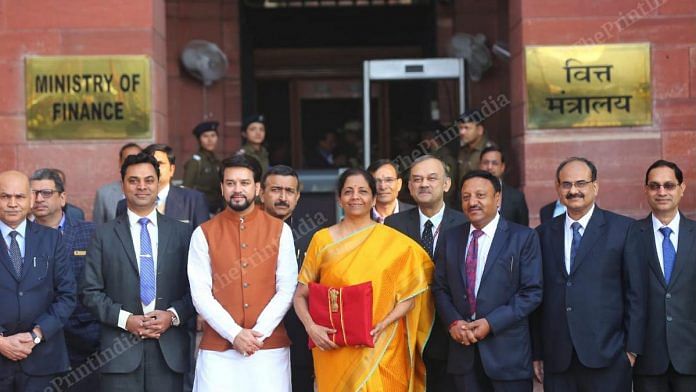Mumbai: India’s annual budget will be unveiled on February 1, with expectations that the government will boost spending to reboot an economy that’s forecast to contract the most this year since 1952. Here’s a guide to those stocks that may be most affected by the spending plan.
Analysts believe that tax cuts, higher capital expenditure and greater spending on infrastructure projects — which tend to support low-income earners — hold the key to unlocking demand for goods and service.
Expectations are high, according to analysts at Citigroup Inc. including Surendra Goyal, as “the government has so far desisted from any major stimulative measures to boost growth post Covid.” Spending could increase by 9.5%, compared with a 6.6% rise last year, Sonal Varma, an economist at Nomura Holdings Inc. wrote in a note.
What analysts expect:
Rural economy
Rural India, where most of the nation’s 1.3 billion citizens live, has been a relative bright-spot during the pandemic, registering growth even while the rest of Asia’s third-largest economy contracted. Increased spending to support incomes, including expanding an existing jobs program, would bolster rural demand, according to Vinay Khattar, head of research at Edelweiss Securities Ltd. in Mumbai.
Beneficiaries would include fertilizer producers including UPL Ltd., farm equipment makers such as Mahindra & Mahindra Ltd. and consumer goods producers including Hindustan Unilever Ltd. and Godrej Consumer Products Ltd.
Automobiles
Analysts are expecting a long-discussed policy banning older vehicles to be unveiled with the budget.
That would bolster demand for an industry that’s already been buoyed by a recent surge in sales. Automakers would also expect to see more details of a $20 billion government program to attract manufacturers, according to analysts at Jefferies India Pvt. led by Mahesh Nandurkar.
Potential beneficiaries include Tata Motors Ltd. and Ashok Leyland Ltd.
Banks
Indian banks’ balance sheets have been spared much damage from the pandemic thanks to a moratorium on loan repayments that ended in August. With that over, the central bank forecasts bad loans will climb to 13.5% of lending by September 30, from 7.5% last year.
Mergers and recapitalization bonds at state-controlled banks may be announced in the budget to contain risks, according to Citi analysts, who add that investors will welcome any hint of share sales or plans to consolidate the government’s holdings in lenders.
Watch shares of IDBI Bank Ltd., Punjab National Bank, Bank of Baroda and State Bank of India.
Infrastructure
As the pace of coronavirus infections slows, the bulk of new spending could go toward new roads, bridges, railways and ports rather than topping up funds to provide relief from the pandemic, Jefferies analysts wrote in a note.
A custom Bloomberg gauge of road builders including NCC Ltd. and IRB Infrastructure Ltd. has climbed 4% since the start of the year, compared with a 0.7% decline in the benchmark Sensex.
Watch cement companies such as Ultratech Cement Ltd. and Ambuja Cements Ltd., along with railways related firms including Container Corporation of India Ltd. and BEML Ltd.
More taxes?
Previous budgets have seen Indian equity investors deterred by levies including capital gains taxes and a surcharge — subsequently rolled back — that especially hit foreign funds.
“A negative surprise this time around could be raising the long-term capital gains tax rate to 15% from 10%,” said Deepak Jasani, head of retail research at HDFC Securities Ltd. “A Covid surcharge on capital gains could also be a negative surprise.”
With India’s S&P BSE Sensex Index trading close to a peak, there’s not much of a safety margin for stock investors.
“At the lofty valuations we sit on today, we recommend caution and advise hedging existing long portfolios,” said Nikhil Kamath, chief investment officer at True Beacon, an India-based hedge fund. “We are going into the budget with 55% hedges on our long portfolio.” –Bloomberg
Also read: Nirmala Sitharaman should pay Cairn in Budget 2021 & end the retrospective tax mess






